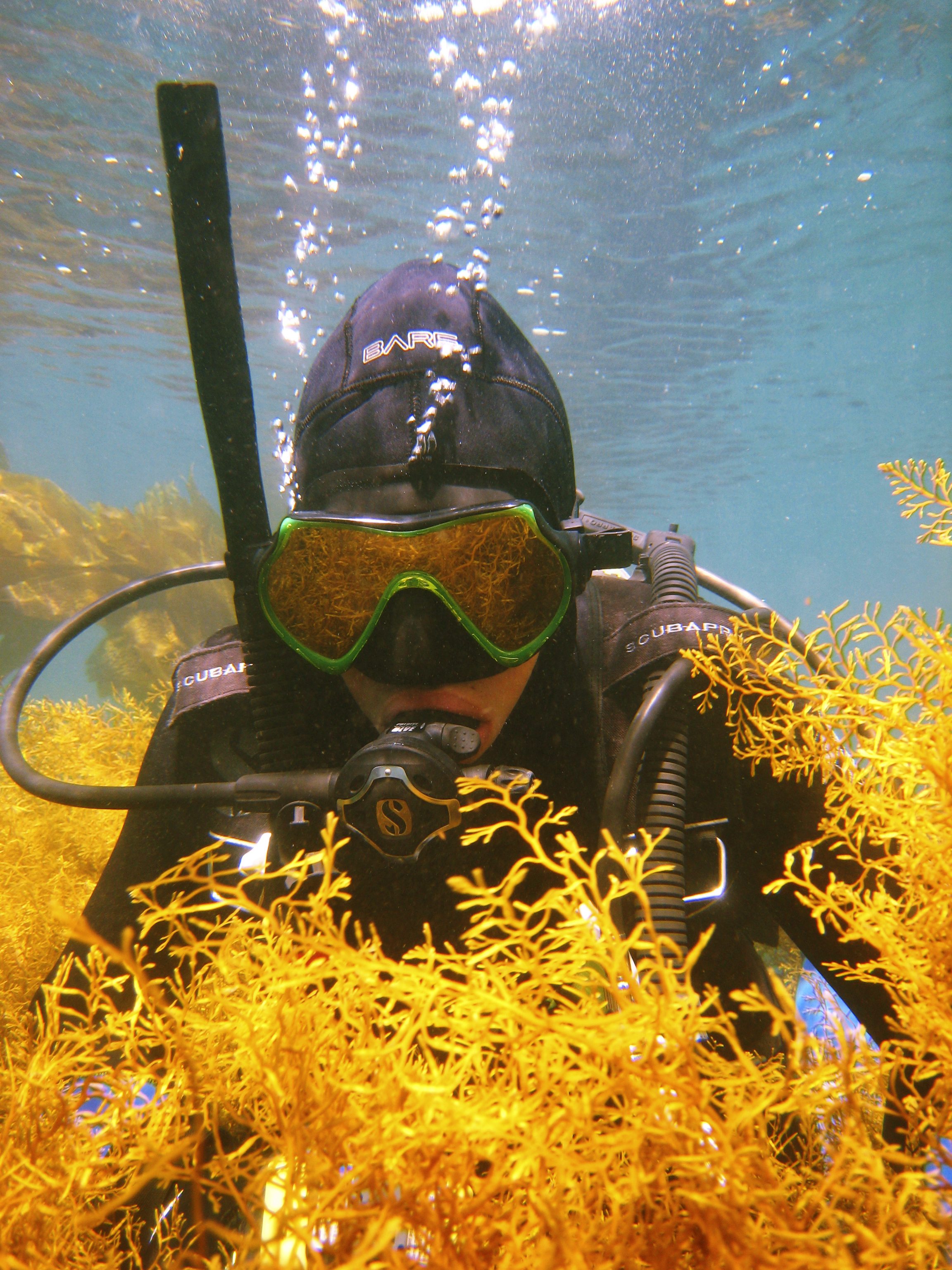Invasion of the Devil Weed and What We Can Do
Invasion of the Devil Weed and What We Can Do
Article by Manuel Chavez, NAUI Instructor at Ocean Safari
Edited by Megumi Itoh
Through the years, the kelp forest of Southern California has faced both natural and man-made challenges. Among them are El Nino and its warm waters, pollution and run-off from our storm drains, and of course the sea urchins. As if these are not enough, there is now a new enemy threatening to deplete our kelp forest. It is sargassum, which is also known as the Devil Weed.
Maunel Chavez, one of the Ocean Safari Instructors, has been involved with Los Angeles Waterkeepers as a volunteer scientific diver for over five years. This organization’s mission is to protect and restore Santa Monica Bay, San Pedro Bay, and adjacent waters. In recent years, they have shifted their focus from urchin removal and relocation (which are being addressed by the commercial urchin divers) to addressing the invasion of sargassum. Actually, these algae have been around for some time, but their recent rapid increase and spread have become a cause for alarm. They are threatening to undermine the kelp forests we have worked so hard to restore.
Three species of sargassum are found in Southern California. Sargassum palmeri has been in our waters for a very long time, and it is now considered native. The other two, Sargassum horneri and Sargassum muticum, are considered invasive non-native species. Initially these two invasive species arrived on the California coast from overseas via cargo ships and oil tankers. From there they spread to Catalina Island and the rest of Channel Islands by way of pleasure boats including fishing and dive boats.
So why are they called Devil Weed and why are we so concerned? The main concern is their aggressive ability to take over the existing environment. They become fertile and ready to reproduce in just six to seven months. They are capable of self-fertilization, meaning each individual has male and female reproductive properties. They grow extremely dense and block sunlight, thereby stealing nutrients from the native vegetation and take over the substrate. By crowding out the native vegetation, it robs food sources from our local invertebrates and fish.
It is interesting to note that both of the invasive species have the same maturation rate to their one-year life cycle. The stage at which they first establish themselves and we start to observe them is called recruit stage. This is usually in the summer and fall. They mature and become fertile during the winter and spring months. They reach senescence in the spring and summer months, when they deteriorate and die off. If we are inclined to harvest this vegetation then it is best done before it becomes fertile (spring and summer months), otherwise we are again helping the sargassum to spread and reproduce. It is also important to note that there may be overlapping generations in a single season.
So what is the answer to this problem? As it stands now, a person who has a California fishing license with ocean enhancement can harvest up to 10 pounds of sargassum in a single day. This is fine for personal consumption, but if the goal is to help our environment, then we are hardly making a dent given the amount if overgrowth taking place. At Los Angeles Waterkeepers, a pilot program is about to take place whereby we will be monitoring the location, species type, density, growth rate and any visual damage already taking place to our native environment. This data is necessary before a proposal can be submitted to the Dept. of Fish and Wildlife for any type of program that will allow for widespread removal.
Ocean Safari would like you to join us in our efforts to protect the kelp forest from the invasion of the Devil Weed. To start things off, we encourage you to participate in the i-Naturalist program. You can sign up and log your observations of these non-native algae on the Sargassum Tracking Map page at http://www.inaturalist.org/projects/sargassum-tracking-map. Your observations will not only contribute to the data collection, but will put you at the forefront of the potentially large scale operation that will allow us to tackle the problem head on.






























